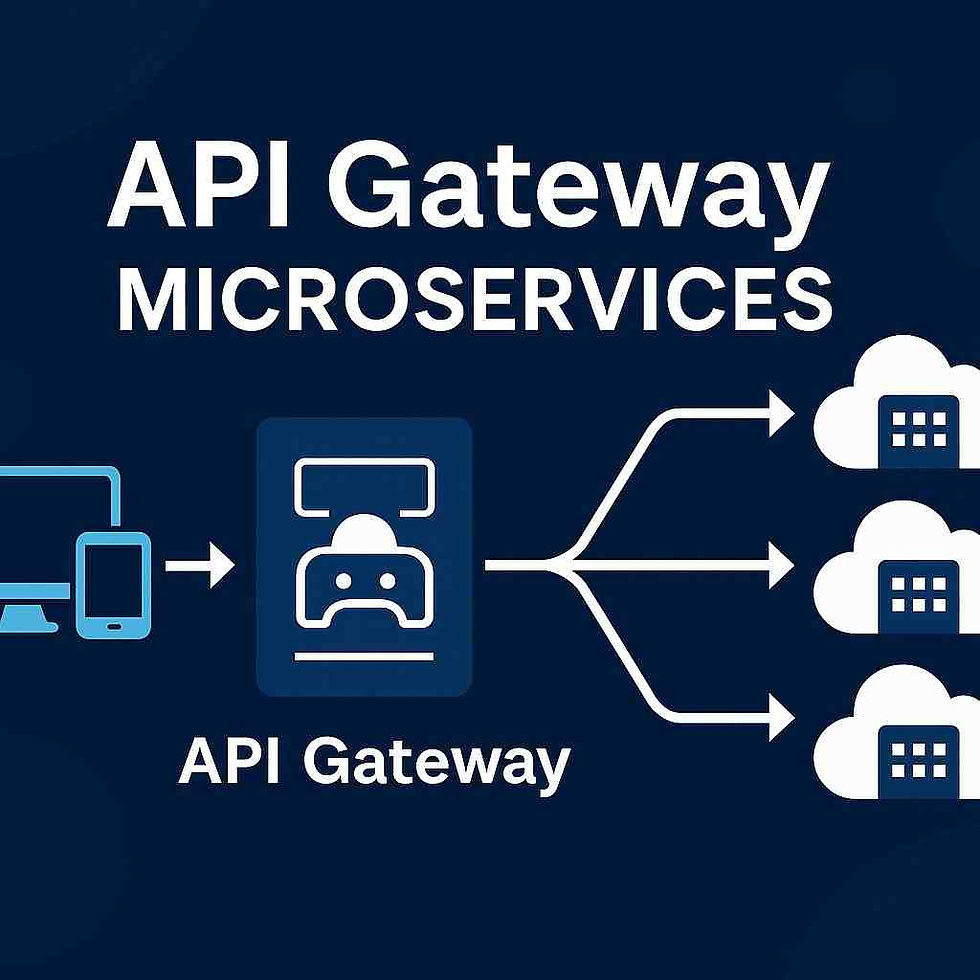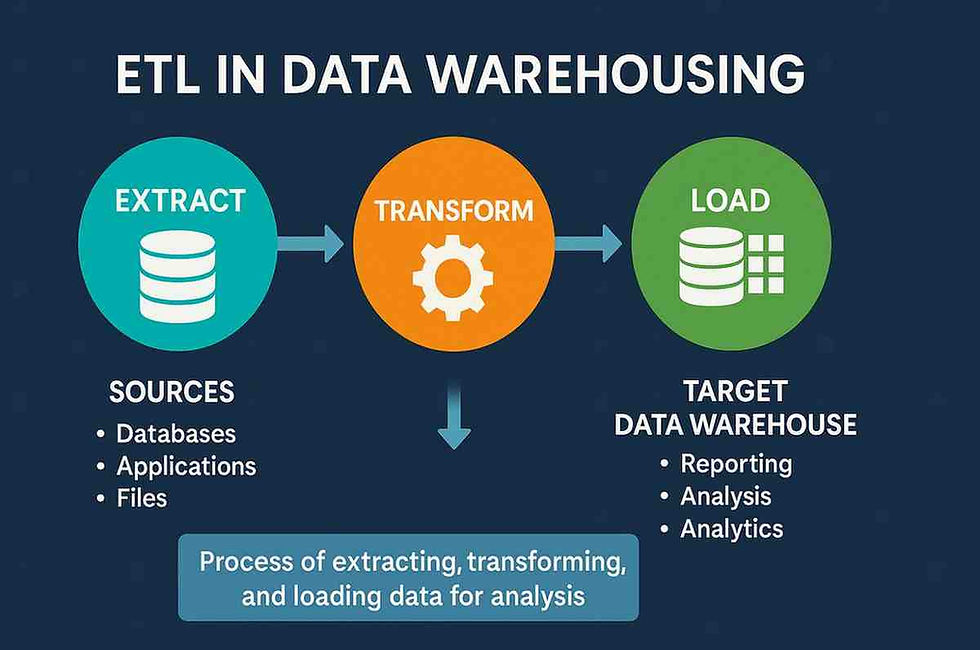DevOps CI Tools Guide: Best Continuous Integration Tools for 2025
- Gunashree RS
- Jun 20
- 7 min read
What Are DevOps CI Tools and Why Do They Matter?
DevOps CI tools (Continuous Integration tools) are software platforms that automate the process of integrating code changes from multiple developers into a shared repository. These tools are fundamental to modern software development, enabling teams to detect integration issues early, maintain code quality, and accelerate deployment cycles.
The continuous integration tools market is valued at $1.4 billion and is anticipated to expand to $3.72 billion by 2029 at a CAGR of 21.18%, demonstrating the critical importance of these tools in today's development landscape. This explosive growth reflects how organizations are increasingly recognizing that effective CI tools are not just beneficial—they're essential for competitive software development.
Which DevOps CI Tools Dominate the Market in 2025?

What Does the Current Market Share Look Like?
The DevOps CI tools landscape is highly competitive, with several key players holding significant market positions:
Market Leaders by Adoption:
Tool | Market Share | Key Strengths |
Jenkins | 46.35% | Open-source flexibility, extensive plugin ecosystem |
Atlassian Bitbucket | 18.61% | Tight integration with the Atlassian suite |
GitHub Actions | 15.2% | Native GitHub integration, workflow automation |
CircleCI | 5.72% | Cloud-native architecture, fast builds |
Azure DevOps | 4.8% | Microsoft ecosystem integration |
GitLab CI/CD | 4.1% | All-in-one DevOps platform |
Jenkins dominates the CI/CD tools market, with a share of 46.35%, making it the clear leader in enterprise adoption. However, cloud-native solutions like GitHub Actions are rapidly gaining ground, particularly among newer organizations and teams prioritizing ease of use.
What Makes These Tools Essential for Modern Development?
According to industry experts, DevOps CI tools have become indispensable because they address critical pain points in software development:
1. Integration Complexity Management
Automated merge conflict detection
Continuous code quality monitoring
Parallel build execution capabilities
2. Quality Assurance Automation
Automated testing at every commit
Code coverage analysis
Security vulnerability scanning
3. Deployment Pipeline Optimization
Streamlined release processes
Environment-specific configurations
Rollback capabilities
How Do DevOps CI Tools Transform Development Workflows?
What Specific Benefits Do Organizations Experience?
The impact of implementing robust DevOps CI tools extends far beyond simple automation. Organizations report measurable improvements across multiple metrics:
Performance Improvements:
63% faster time-to-market for new features
58% reduction in deployment failures
71% improvement in mean time to recovery (MTTR)
45% decrease in manual testing overhead
Business Impact Statistics:
Teams using advanced CI tools deploy 208 times more frequently than low performers
High-performing organizations have 106 times faster lead time from commit to deploy
Organizations with mature CI/CD practices experience 50% fewer security incidents
What Are the Core Features Every CI Tool Should Provide?
Essential CI Tool Capabilities:
Source Code Management Integration
Git-based workflow support
Branch protection rules
Merge request automation
Build Automation
Multi-language support
Parallel execution
Dependency management
Testing Framework Integration
Unit test execution
Integration test orchestration
Performance testing capabilities
Deployment Automation
Environment promotion
Blue-green deployments
Canary release support
Monitoring and Reporting
Build status notifications
Performance metrics
Compliance reporting
Which DevOps CI Tools Should You Choose for Your Organization?
What Factors Determine the Right Tool Selection?
Choosing the optimal DevOps CI tool requires careful consideration of multiple factors:
1. Jenkins: The Veteran Choice
Best For: Large enterprises with complex requirements
Strengths: Massive plugin ecosystem (1,800+ plugins), highly customizable
Considerations: Requires significant maintenance, steep learning curve
Cost: Free (open-source) but high operational overhead
2. GitHub Actions: The Modern Integration
Best For: Teams already using GitHub repositories
Strengths: Native GitHub integration, marketplace ecosystem, easy YAML configuration
Considerations: Can become expensive for large teams, GitHub dependency
Cost: Free for public repositories, competitive pricing for private repositories
3. CircleCI: The Cloud-Native Solution
Best For: Teams prioritizing speed and simplicity
Strengths: Fast build times, excellent Docker support, intuitive interface
Considerations: Limited on-premise options, pricing can scale quickly
Cost: Free tier available, usage-based pricing
4. Azure DevOps: The Microsoft Ecosystem Play
Best For: Organizations heavily invested in Microsoft technologies
Strengths: Tight integration with Microsoft tools, comprehensive DevOps suite
Considerations: Best value realized within the Microsoft ecosystem
Cost: Competitive pricing, especially for Microsoft customers
What Implementation Strategy Delivers the Best Results?
Phased Implementation Approach:
Phase 1: Foundation (Weeks 1-2)
Repository integration setup
Basic build pipeline creation
Core team training
Phase 2: Automation Expansion (Weeks 3-6)
Automated testing integration
Quality gates implementation
Notification systems setup
Phase 3: Advanced Features (Weeks 7-12)
Deployment automation
Environment management
Performance monitoring
Phase 4: Optimization (Ongoing)
Pipeline performance tuning
Advanced analytics implementation
Continuous improvement processes
How Can Organizations Maximize ROI from DevOps CI Tools?
What Best Practices Ensure Successful Implementation?
Technical Best Practices:
Infrastructure as Code (IaC)
Version-controlled infrastructure definitions
Automated environment provisioning
Consistent deployment targets
Pipeline Optimization
Parallel execution strategies
Efficient caching mechanisms
Smart test execution (only affected tests)
Security Integration
Automated security scanning
Secrets management
Compliance monitoring
Organizational Best Practices:
Cultural Transformation
Cross-functional team collaboration
Shared responsibility for quality
Continuous learning emphasis
Metrics-Driven Improvement
Key performance indicator tracking
Regular retrospectives
Data-driven decision making
What Common Pitfalls Should Teams Avoid?
Implementation Challenges and Solutions:
Challenge 1: Tool Proliferation
Problem: Using too many disconnected tools
Solution: Prioritize integrated toolchains over point solutions
Challenge 2: Insufficient Testing Automation
Problem: Manual testing bottlenecks
Solution: Invest in comprehensive test automation strategies
Challenge 3: Poor Pipeline Design
Problem: Slow, unreliable builds
Solution: Follow pipeline design best practices and regular optimization
What Future Trends Are Shaping DevOps CI Tools?
How Are AI and Machine Learning Transforming CI Tools?
The DevOps CI tools landscape is rapidly evolving with artificial intelligence integration:
AI-Powered Features:
Predictive Analytics: Anticipating build failures before they occur
Intelligent Test Selection: Running only relevant tests based on code changes
Automated Root Cause Analysis: Identifying failure causes automatically
Resource Optimization: Dynamic resource allocation based on build patterns
Market Growth Indicators: The Global DevOps automation tools market is expected to reach US$ 72.81 Bn by 2032, from US$ 14.44 Bn in 2025, at a CAGR of 26.0%, indicating massive investment in advanced automation capabilities.
What Cloud-Native Capabilities Are Becoming Standard?
Emerging Standards:
Kubernetes-Native CI/CD: Built-in container orchestration
Serverless Build Execution: Pay-per-use build models
Multi-Cloud Deployment: Vendor-agnostic deployment strategies
Edge Computing Integration: Distributed build and deployment capabilities
Frequently Asked Questions
What are the most popular DevOps CI tools in 2025?
The most popular DevOps CI tools include Jenkins (46.35% market share), GitHub Actions, CircleCI, Azure DevOps, and GitLab CI/CD. Jenkins remains the dominant choice for large enterprises, while GitHub Actions is rapidly gaining adoption among modern development teams.
How much do DevOps CI tools typically cost?
DevOps CI tools costs vary significantly. Open-source solutions like Jenkins are free but require operational overhead. Cloud-based tools like GitHub Actions start free for public repositories, with private repository plans beginning around $4/month per user. Enterprise solutions can range from $10-50+ per user monthly.
What's the difference between CI and CD tools?
CI (Continuous Integration) tools focus on automating code integration, building, and testing. CD (Continuous Delivery/Deployment) tools handle automated deployment to various environments. Most modern DevOps platforms combine both CI and CD capabilities in integrated toolchains.
Can small teams benefit from DevOps CI tools?
Absolutely. Small teams often see the greatest relative benefits from CI tools because they automate manual processes that would otherwise consume significant developer time. Many tools offer free tiers specifically designed for small teams and open-source projects.
How long does it take to implement a DevOps CI tool?
Basic implementation can be completed in 1-2 weeks, but full optimization typically takes 2-3 months. The timeline depends on existing infrastructure complexity, team size, and the scope of automation being implemented.
What skills are needed to manage DevOps CI tools?
Key skills include understanding of version control systems (Git), basic scripting abilities (Bash, PowerShell, Python), containerization knowledge (Docker), and cloud platform familiarity. Many tools now offer low-code/no-code options to reduce technical barriers.
Are DevOps CI tools secure for enterprise use?
Modern CI tools include enterprise-grade security features like role-based access control, secrets management, audit logging, and compliance certifications. However, proper configuration and security best practices are essential for maintaining security.
How do DevOps CI tools integrate with existing development workflows?
Most CI tools offer extensive integration capabilities through APIs, webhooks, and marketplace plugins. They can connect with issue tracking systems, communication tools, monitoring platforms, and deployment targets to create seamless workflows.
Conclusion
DevOps CI tools have evolved from nice-to-have utilities to mission-critical infrastructure components that directly impact business success. With the continuous integration tools market projected to reach $3.72 billion by 2029, organizations that fail to adopt robust CI/CD practices risk falling behind competitors who leverage these powerful automation capabilities.
The choice of DevOps CI tools should align with your organization's specific needs, technical requirements, and growth trajectory. Whether you choose the flexibility of Jenkins, the integration of GitHub Actions, or the simplicity of CircleCI, the key is implementing a solution that enables your team to deliver high-quality software faster and more reliably.
As the market continues to evolve with AI-powered features and cloud-native capabilities, staying informed about tool developments and best practices will be crucial for maintaining a competitive advantage in software development.
Key Takeaways
• Market Growth: DevOps automation tools market expected to reach $72.81 billion by 2032, growing at 26.0% CAGR
• Jenkins Dominance: Jenkins maintains 46.35% market share, making it the most widely adopted CI tool globally
• Performance Impact: Teams using advanced CI tools deploy 208 times more frequently than low-performing organizations
• ROI Statistics: Organizations report 63% faster time-to-market and 58% reduction in deployment failures
• Cloud Adoption: GitHub Actions and cloud-native solutions are gaining rapid adoption among modern development teams
• Implementation Timeline: Basic CI tool setup takes 1-2 weeks, full optimization requires 2-3 months
• Cost Structure: Tools range from free open-source options to $50+ per user monthly for enterprise solutions
• AI Integration: Machine learning features are becoming standard for predictive analytics and intelligent test selection
• Security Priority: Enterprise-grade security features are now standard across major CI tool platforms
• Future Focus: Kubernetes-native and serverless build execution emerging as next-generation capabilities
External Sources
Spacelift DevOps Statistics Report - Comprehensive market share and adoption data
Coherent Market Insights DevOps Tools Analysis - Market growth projections and trends
Fortune Business Insights CI Tools Report - Industry analysis and forecasts
GitLab DevOps Platform Documentation - Technical Implementation Guides
Atlassian DevOps Practices Guide - Best practices and methodologies
GitHub Actions Marketplace - Tool integrations and workflow examples
Jenkins Official Documentation - Comprehensive setup and configuration guidance
CircleCI Resource Center - Implementation strategies and case studies




When planning a new deck, finding experienced and reliable professionals makes all the difference. Quality craftsmanship not only improves the look of your outdoor space but also ensures the structure lasts for years with minimal maintenance. Many homeowners looking to upgrade their backyards have been turning to deck builders glencoe who specialize in custom designs that suit both modern and traditional homes. These local experts understand the area’s climate and materials that hold up best over time. Whether you’re going for a cozy patio space or a large entertaining area, it’s worth taking the time to research builders with strong reviews and a proven portfolio before starting your project.
INDOVIP138
indovip138
indovip138
indovip138
indovip138
indovip138
indovip138
indovip138
indovip138
indovip138
indovip138
indovip138
indovip138
indovip138
indovip138
indovip138
indovip138
indovip138
indovip138
indovip138
indovip138
indovip138
indovip138
indovip138
indovip138
indovip138
indovip138
indovip138
indovip138
indovip138
indovip138
indovip138
indovip138
indovip138
indovip138
indovip138
indovip138
indovip138
indovip138
indovip138
indovip138
indovip138
indovip138
indovip138
indovip138
Link INDOVIP138
indovip138
indovip138
indovip138
indovip138
indovip138
indovip138
indovip138
indovip138
indovip138
indovip138
indovip138
indovip138
indovip138
indovip138
indovip138
indovip138
indovip138
indovip138
indovip138
indovip138
indovip138
indovip138
indovip138
indovip138
indovip138
indovip138
indovip138
indovip138
indovip138
indovip138
indovip138
indovip138